10 Attributes Of a Great CEO Peer Group Member
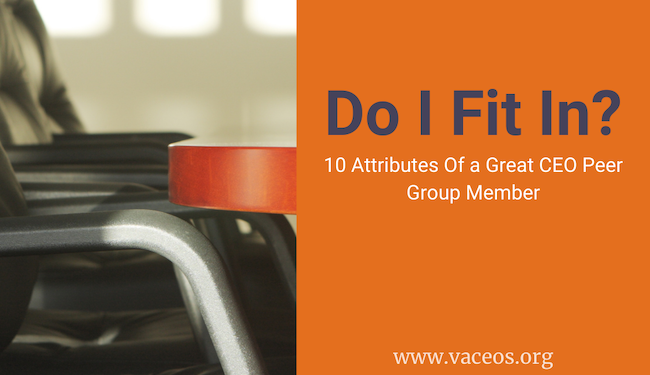
It’s no secret that CEOs of small and mid-sized businesses get a lot out of their peer advisory roundtable groups. Roundtables supply diverse perspectives in a confidential environment and are proven to deliver advantages in decision-making and leadership, especially during challenging times.
To ensure the roundtable performs at its greatest potential, I’ve found that those participants who receive the most from the process tend to share certain qualities.
They are, in no particular order:
- Intellectual curiosity. A desire to know what makes things work, the “back story”, answers to “why”, getting to the “root cause”.
- Life-long learner.
- Open to seeking the input of others, and willing to implement suggested solutions not your own.
- Committed to the process of continuous improvement. Not satisfied with the current state. Growth-oriented.
- Embrace change. An innovative spirit.
- Strategic thinker.
- Self-aware. A willingness to be vulnerable, to be transparent.
- Secure. No inherent need to be the smartest person in the room.
- Humble. More concerned about being able to give as much as you’re getting, as opposed to getting as much as you’re giving.
- Appreciate the power of diverse backgrounds, world views, perspectives, and experiences.
These attributes, in fact, define our members to a tee!
Is it necessary to have all of these attributes to maximize the benefit of peer group membership? No. Would it be helpful to have some of them? Definitely. More important is attitude, your approach to the process. We all get the same 24 hours per day. The only thing that we can control is how we utilize, leverage, and prioritize those 24 hours.
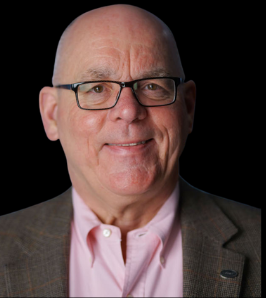
About the Author
Keith Hartman, Regional Executive for Virginia Council of CEOs (VACEOs), has over five years of experience developing and supporting peer-to-peer roundtables and forums for Vistage Worldwide, the international leader in peer advisory groups and personal leadership development for CEOs and senior leaders. He has experienced first-hand the transformational impact that the sharing of challenges, opportunities, and experiences with trusted peers in a confidential environment can have, and is looking forward to helping the Council expand this concept to all corners of the Commonwealth. Learn more about Keith.
Related article:
3 Reasons Why Marie Antoinette Lost Her Head (and how today’s CEOs can learn from it)
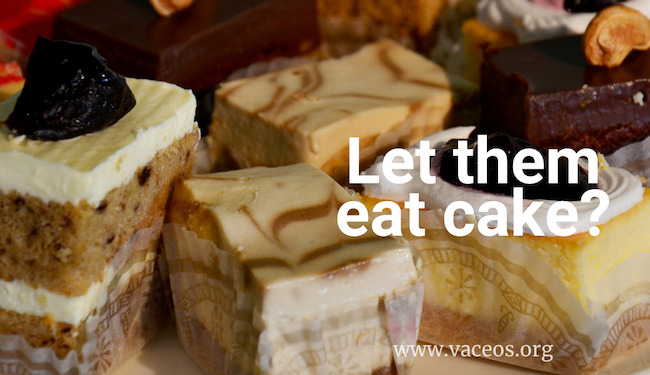
“Let them eat cake,” famously rumored to be said in the 17th or 18th century by princess Marie Antoinette upon being told that the French peasants had no bread. Whether she actually said it or not is unsure, but it does offer small business CEOs a few lessons in leadership.
3 Reasons Why Marie Antoinette Lost Her Head
#1. Losing touch
Knowing your audience is important. As a leader, you have to be mindful of your words to avoid a potential faux pas. Immerse yourself in the wisdom of others and find better ways to handle sticky situations.
#2. Running from crisis
Respect is earned by facing problems head on. Managing confrontation is unfortunately part of the job and must always be handled tactfully. Have a trusted friend by your side.
#3. Guillotines
The world is quick to judge and it doesn’t take much for tempers to flare. You’ve done everything in your power, but are truly struggling to fix the issue at hand. Fortunately for you, we know people who can help. It will be alright.
BUT WHAT IF SHE’D HAD BETTER FRIENDS IN HER CORNER?
Life is full of missteps and mistakes. A smart leader will observe others, absorb their wisdom, and navigate through new territory much easier.
Our CEO members find that with the backing of their peers, they evolve faster and achieve more together. Listen in to what they have to say.
Do As the Romans Do Not
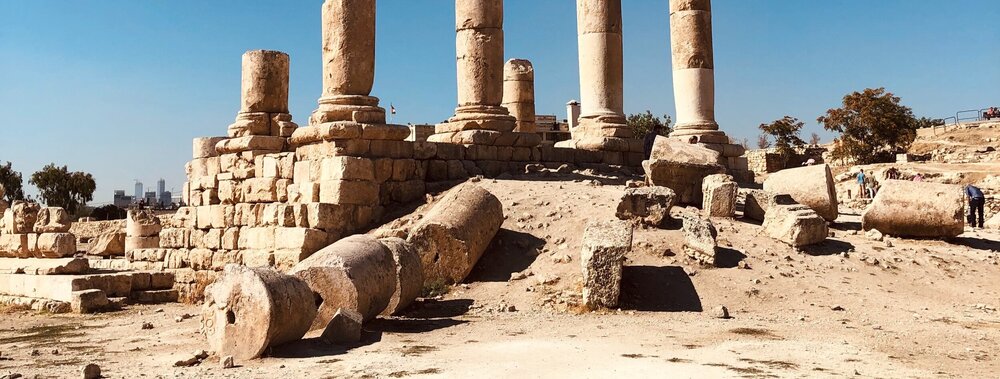
3 REASONS WHY AN EMPIRE CAME CRASHING DOWN
(and how today’s CEOs can learn from it)
#1. Internal Conflict
Making an entire empire happy seems impossible. As the leader it can be draining. What if there’s a way you haven’t thought of? You’ll never know without immersing yourself in the wisdom of others with similar challenges.
#2. Wandering Values
As the empire evolves, so does its goals. The trick is to never let these goals interfere with, or take priority over a solid foundation of values. Having trusted peers as friends helps us keep sight of what matters most.
#3. Barbarian Tribes
Competition is slightly more civil these days. Regardless, it’s important to keep your spears sharp and stay aware of your surroundings. It’s easier to hear the rumblings of potential threats when you have alliances on the outside.
BUT WHAT IF THE EMPIRE HAD THE RIGHT SUPPORT?
Our CEO members find that with the backing of their peers, they evolve faster and achieve more together. Listen in to what they have to say.
Bringing Back An Iconic Brand: The Stuckey’s Story
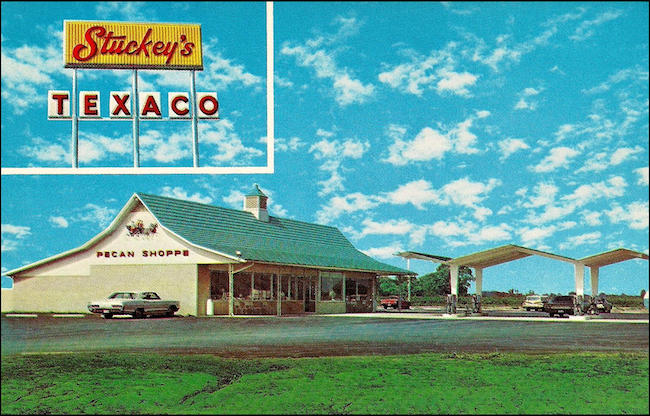
Stuckey’s is one of those iconic brands of the 60s and 70s that’s hard to forget. Peaking during a time when taking a road trip in your woody station wagon was the rage and the thought of a night’s stay at the Howard Johnson’s or Holiday Inn made you giggle with glee, brands like these became classics many of us came to know and love.
The Stuckey’s roadside stop and its famous pecan log rolls began to lose their luster in the 80s but have now seen a resurgence, thanks to the founding father’s granddaughter, Stephanie Stuckey. But why, in 2019, would this environmental lawyer by trade take on the family business in its last hour of life?
“I think what really drove me more than anything is that I knew my grandfather and I knew his vision for Stuckey’s and it just broke my heart to see how the company had floundered. Nobody either had the capacity, the capital, the wherewithal. Nobody wanted it,” she reveals during her presentation to a VA Council of CEOs audience.
Six months after buying a sizable sample of shares, the business turned a profit under her guidance. For Stephanie there was no turning back. Fueled by her love of the brand, she bought her father out. Today she is honoring what is sacred in the business but is determined to shake off what is not working.
Here is how this passionate and determined CEO is bringing back this iconic brand.
But first, a trip back in time.
Uniquely Stuckey’s
The history of the iconic Stuckey’s brand began during the Great Depression, when W.S. Stuckey, Sr. had to drop out of law school to work the family farm. Desiring a better life, he had a side hustle selling pecans on the side of the road. There he recognized a need.
“He saw very quickly that the problem was, especially in that time, people were traveling the roads and didn’t have reliable places to pull over and get gas and have a cold drink of water. We really were the very first roadside retail chain,” says Stephanie. At its peak in the early seventies, Stuckey’s claimed 370 stores in over 40 States, every major interstate highway system, except Pacific Northwest.
Stuckey’s was the place to “Eat Here and Get Gas” as its famous tee shirt expressed. The chain featured Stuckey’s candy products and quirky merchandise, including games for the car, small toys, and various other sundries to make the road trip convertible and memorable.
“I think a lot of it was the experience we were unlike any other roadside stop,” says Stephanie. “At one point we had talking Mynah birds in the store. We had quite a few stores that had their own honeybee hives and made honey on site.”
Stephanie reports that franchisees were almost always a husband and wife team who often lived in the back of the store. Often the wife made special recipes to supplement the standard menu. This gave each Stuckey’s a similar but uniquely local feel.
“My grandfather believed in having a unique, curated experience. So you would go to a Stuckey’s on Stuckey’s in Florida you would get fresh citrus fruits out front and there would alligator souvenirs. You would have things that were special to that area. We had a candy plant, a trucking company, a sign company. Things were going gangbusters and then he sold the business to Pet Inc.,” reports Stephanie.
“They were just going to buy Stuckey’s trademark and make a bunch of cheap, ugly chotchkies —souvenirs probably — and sell them on Amazon for cut-rate prices and cheapen the brand even further. And I was like, this is not the Stuckey’s. This is not how we finish.”
Stephanie stuckey
Fast forward, corporate merger after corporate merger, the brand became a subsidiary of a large corporation. The family became disengaged and the brand began to disappear. Hundreds of stores were lost.
Stephanie’s father bought the company in 1985, but the store-in-store concept further diluted the brand. Financially the business was losing money. Occupied by other projects like his father before him, he was ready to sell the company and trademark.
The final chapter of the brand was looking grim. If Stephanie didn’t step in, outside investors would. “They were just going to buy the Stuckey’s trademark and make a bunch of cheap, ugly chotchkies —souvenirs probably — and sell them on Amazon for cut-rate prices and cheapen the brand even further. And I was like, this is not the Stuckey’s. This is not how we finish,” says Stephanie.
The Brand Rebounds by Focusing on Visual Rebranding, Its Sacred Cow, Manufacturing, and Retail Sales
Stephanie immersed herself in the history of the company and religiously studied other nostalgic and new brands like Howard Johnson’s, Chick-fil-A, and Nike. She learned what makes a great CEO. “There’s no magic formula for what makes a great CEO. They have all these different characteristics and personality types and skills, but the ones that are really successful share one thing, and that is they surround themselves with people who fill in their gaps,” she reports.
Simply stated, Stuckey’s started to get back to its roots. “We’re focusing on what we started as, which was a pecan stand on the side of the road,” says Stephanie.
The game plan is relatively simple:
- Shake off the bad
- Keep the sacred cow
- Build growth with manufacturing and retail sales outlets
- Dream big
Shaking Off the Bad
“Bad (packaging and logo) design is what I’m shaking off,” reports Stephanie. “So I invested in storytelling and I invested in beautiful design.” She reveals that she takes inspiration from other nostalgic brands like Moon Pie and Little Debbie Snack Cakes. “They all have their classic line, but then they have fun with it,” she says.
The logo has had a facelift and she plans to also make use of original artwork from the Stuckey archives. “I am spending very strategic dollars on what I think is the most important aspect of branding, which is designing. I really feel strongly about the look of the brand.”
Keeping the Sacred
Stephanie believes in the company’s “sacred cow”, which is its pecan log roll, described as “Uniquely sweet and scrumptious, with a light, fluffy nougat center mixed with maraschino cherries which are hand-dipped in an antique copper kettle holding fresh-made buttery caramel.” But like the packaging, the log rolls have been updated. They are larger and lack the high fructose corn syrup and artificial ingredients of the original.
And because she recently purchased a factory in the heart of pecan country, Stuckey’s is literally tree to table.
Building Product and Sales Growth
Manufacturing the candies in-house and focusing on retail sales are what’s driving Stuckey’s current growth. “I want to see us making more of our product. What I think what the pandemic taught us is that we have all these supply chain breakages and the closer you can get to making your own stuff and having a connection with what you’re making,” she reports.
“We bought a manufacturing facility that shells pecans to make pecan candies. So that is the key driver of our growth is that we are selling our product to more retail channels. And we’re not just selling to Stuckey’s. We have some 250 plus, and it’s growing every day. We’re about to pick up a new chain of 250 new stores,” she reports.
The website is revamped website, making it easy for people to go online and buy the products. Stephanie reports the merchandise is very popular. “The Get Gas shirt we made in the seventies. I brought it back. People love it! We have sold out and we are ordering more. And we’ve got coonskin caps, dunking birds, rubber alligators, and all the sort of kitschy fun merchandise that you might remember pulling over and seeing as a kid. And so we’re bringing all that back and along with the fun of taking a road trip.”
Big Dreams
What is next for the brand? Stephanie explains that she is not fighting to win over Gen Zs or Millennials, but rather plans to lean into nostalgia.
“I like to say we are a small brand with big, big aspirations. I want to be the embodiment of the road trip. That’s my big dream. That is our big audacious goal. It’s when you think ‘road trip,’ you think Stuckey’s. And I want us to own our own stores and I want to be able to build the awareness of the road trip and a community of people who love to take to the open road.”
It’s not 5,000 stores or a thousand stores she hopes to build, but only a dozen or so, framed as Stuckey’s Roadside Oasis complete with souvenirs, photo booths, vending and amusement machines, and amazing local food.
In the works now, a Stuckey’s RV retro decorating line, complete with curtains and kitchie towels. No doubt this will tempt a new generation of road trippers!
We have no doubt that Stephanie’s passion for the brand will keep this piece of nostalgia alive and well.
Source for story: VA Council of CEOs event: “THE STUCKEY’S STORY: BRAND BUILDING, PECANS, AND THE GREAT AMERICAN ROAD TRIP”, May 13, 2021, 12:30 – 1:30 PM EST
4 Ways to Empower Your Team to Step Up in a Crisis
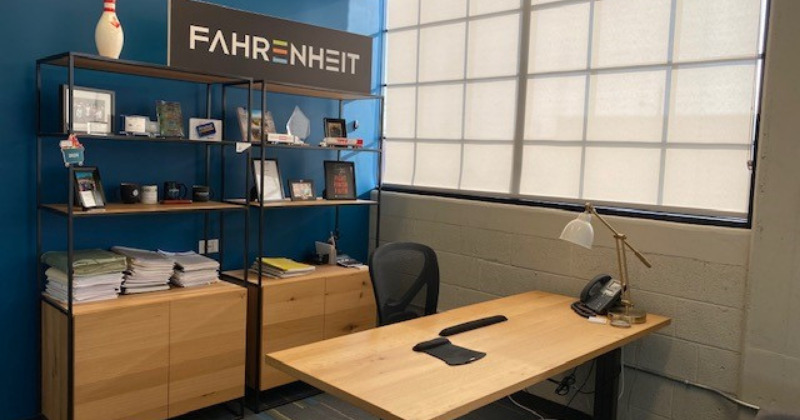
Is your team empowered to step up in a crisis?
Is it ready to take charge on a moment’s notice?
Is it set up to advance daily business when your chair is unexpectedly empty?
Is it really?
As a leader, I had the opportunity to find out for myself when I got COVID and was forced to completely shut down. Immediately. No transition meetings. No phone calls. No emails. Full stop. One moment I was engaged, available, responsive, involved. And the next, not at all. It was a transformational moment for me, for the business and for our team.
Throughout my experience, I truly learned what it really means to empower a team to continue advancing the business without one of its leaders. Fortunately for Fahrenheit, our team didn’t miss a beat when I went off the grid. And while it feels lucky, luck really had nothing to do with it. Fortunately, I have a great partner and Co-CEO, Rich Reinecke. Many organizations do not have that luxury.
As I’ve had a chance to reflect on the experience, I’ve realized the careful cultivation of 4 key factors proved essential to our success. And if your team shows up to the office one day to find an unexpectedly empty chair in your office, the 4 factors will also prove essential to yours.
4 WAYS TO EMPOWER YOUR TEAM TO STEP UP IN A CRISIS
What can you learn from us about empowering your team to step up in a crisis? When the chips were down, the team at Fahrenheit was able to rise to the occasion because of 4 specific factors we already had in place. In order to ensure your team is ready to continue advancing the business without you, these 4 key factors are absolutely mission critical to empowering your team to step up in a crisis — COVID or otherwise.
#1. DEVELOP STRATEGIC ROLES TO SUPPORT FOCUS AREAS
Question To Ask: Have I created roles critical to running and growing the business?
Since Fahrenheit was launched in 2009 with two co-founders and one employee, we have been fortunate to experience exponential growth. At our 10-year anniversary, a natural reflection point for businesses, we took a deep dive into how best to continue to invest and grow. We embarked on a strategic journey to identify the roles that would support our growth and allow us to continue scaling the business. We created the positions, defined their responsibilities, and hired the right people to do the work (learn more about that in #2). Each area of the business critical to our success has its own champion, and that champion knows what needs to be done.
The benefit: When each team member understands what they’re responsible for, their focus is clear — whether someone is steering the ship or not. And, if I may mix metaphors, because we’ve got all the bases covered with specific key roles, we have no gaps in our daily operations.
#2. HIRE THE RIGHT PEOPLE
Question to Ask: Do I have the right people in place to get the job done?
As Jim Collins tells us in his legendary leadership book Good to Great, great organizations make sure they have the right people on the bus — and in the right seats — to move forward. At Fahrenheit, we identified the right seats as part of our strategic assessment and planning (detailed in #1 above). For us, the “right” people for those seats are highly capable, experienced, hands-on self-starters with high levels of personal accountability. Our core values and the “why” that defines our culture also help us define the right people for Fahrenheit. In fact, we incorporate our core values into everything we do, including hanging them prominently in our office space.
The benefit: The Fahrenheit team was ready to roll up their sleeves and step in when I stepped out because that’s core to who they are and how they operate every day. Not a single person on our team needs their hand held to get their job done.
#3. FOSTER AN ENTREPRENEURIAL MINDSET
Question to Ask: Does my team have the freedom to make mistakes?
The entrepreneurial mindset is built on speed and failure. Yes, failure. Not only moving fast to embrace new opportunities and solve challenges, but failing fast — and learning fast. The only way to learn from failure is to make mistakes. The entrepreneurial mindset is one of our core values for a reason. Our team is empowered to make mistakes within our intentional culture of growth and improvement. We say it, we live it, and, most importantly, we support it with actions as well as words. We have long said Fahrenheit is one experiment after another!
The benefit: A supportive environment is freeing, and our team has that freedom every day. When there is no paralysis from fear of making the wrong decision, your team will make decisions — on their own, without input. And those decisions will take the company forward.
#4. BUILD A STRONG SENSE OF COMMUNITY
Question to Ask: Is my team in it to win it — together?
At Fahrenheit, we’ve worked hard to create a culture that embraces and prioritizes the idea of community. It may sound hokey, but we’re truly “all for one and one for all.” It’s another example of living our core values — in this case Community specifically, as well as Accountability, which is the idea that we keep our promises to one another.
The benefit: When people are part of a team, they will step up and act for the good of the team as a whole. No one wants to be the weak link who lets the team down.
MAKING EMPOWERING YOUR TEAM A REALITY
I hope you never have to find out whether your team is ready to continue advancing your business in your absence. But if you do, and you’ve prepared by putting these 4 factors in place, you can do so with the confidence that your team is truly empowered to step up in a crisis.
Despite my leadership purpose “To consistently seek to understand and empower,” I’ll confess I’m still a work in progress. But my COVID experience had the surprise — and welcome — benefit of accelerating my development in that area. I learned, because I had to, what true empowerment is, and I look forward to being more purposeful in that endeavor going forward.
If you’d also like to grow in that area, there’s no better place to start than setting up your team for success by putting these 4 factors in place. Because everyday empowerment will strengthen your business, even when it’s “just” business as usual.
To find out how Fahrenheit can help you empower your team to step up in a crisis, or about how we can accelerate your progress and help you overcome challenges to find the straightest path forward, contact us today to learn more about what our team of seasoned, C-level executives and consultants can do for you.
COVID Update:
Overall I was fortunate my COVID symptoms were primarily severe fatigue and headaches. Several months after my diagnosis I am happy to report I’m doing very well, though I still continue to battle occasional periods of fatigue. I am truly blessed by the support of my family and my Fahrenheit family.
ABOUT THE AUTHOR
Keith Middleton is a co-managing partner and co-founder of Fahrenheit Advisors. He oversees the delivery of the firm’s consulting and fractional financial management services, as well as risk management and operations. He is a member of Fahrenheit’s Leadership Team. A seasoned corporate finance executive, Keith’s expertise in organizational strategy and a newfound passion for entrepreneurism has helped Fahrenheit expand across multiple service lines and geographies.
EDITOR’S NOTE: Content provided by Fahrenheit Advisors. Fahrenheit Advisors is a Sponsor of Virginia Council of CEOs. This post was originally posted here.

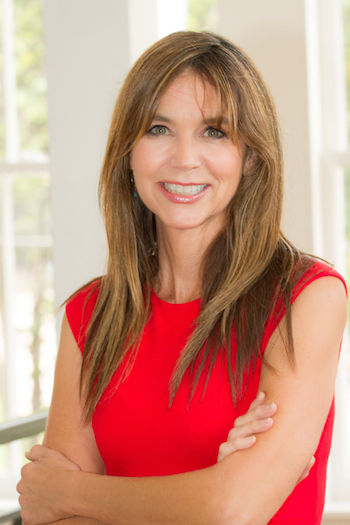

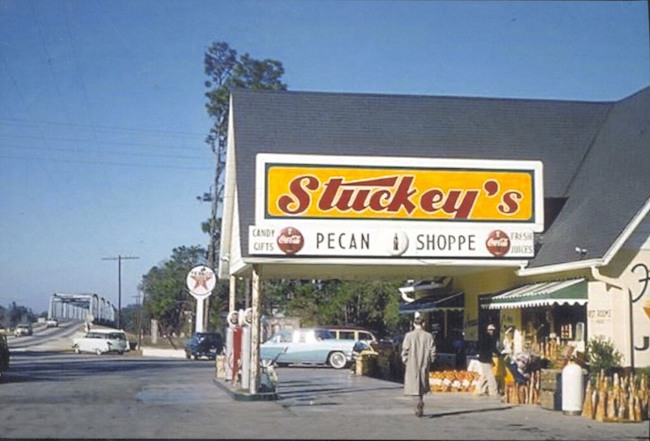
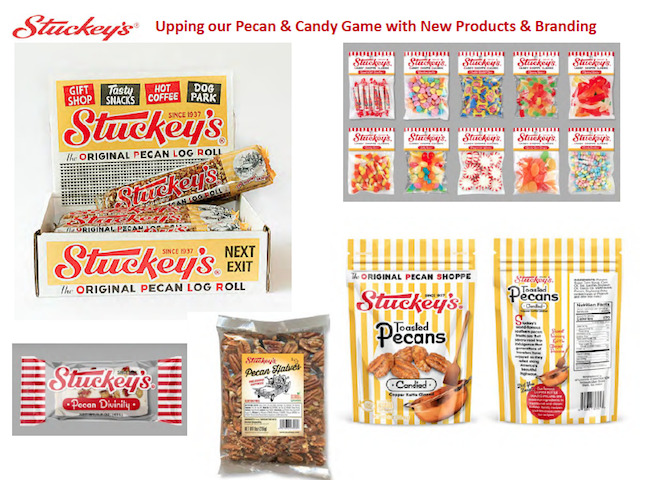
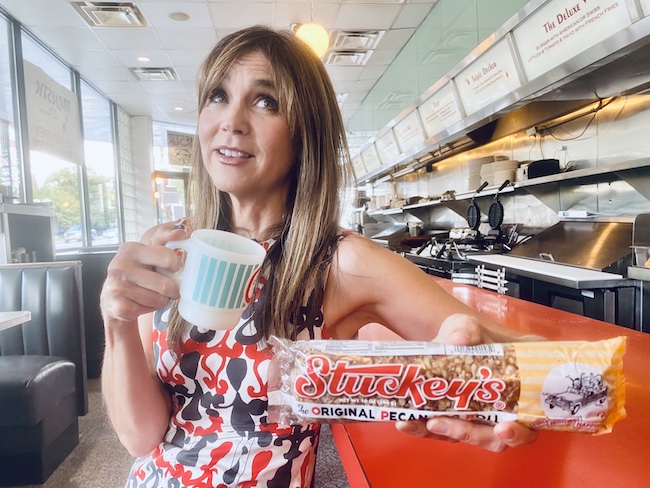
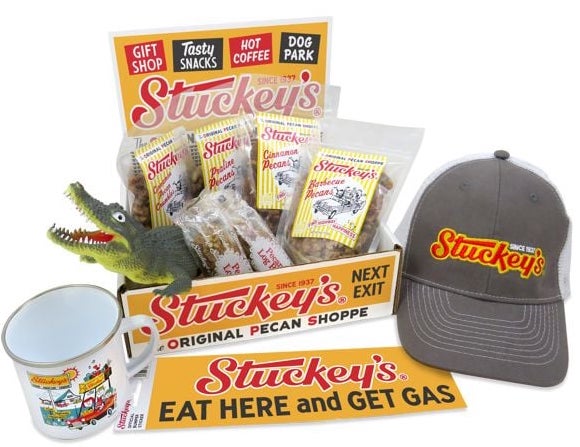
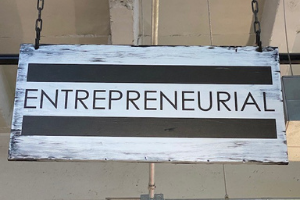
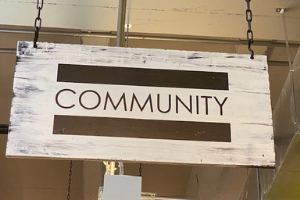

Recent Comments